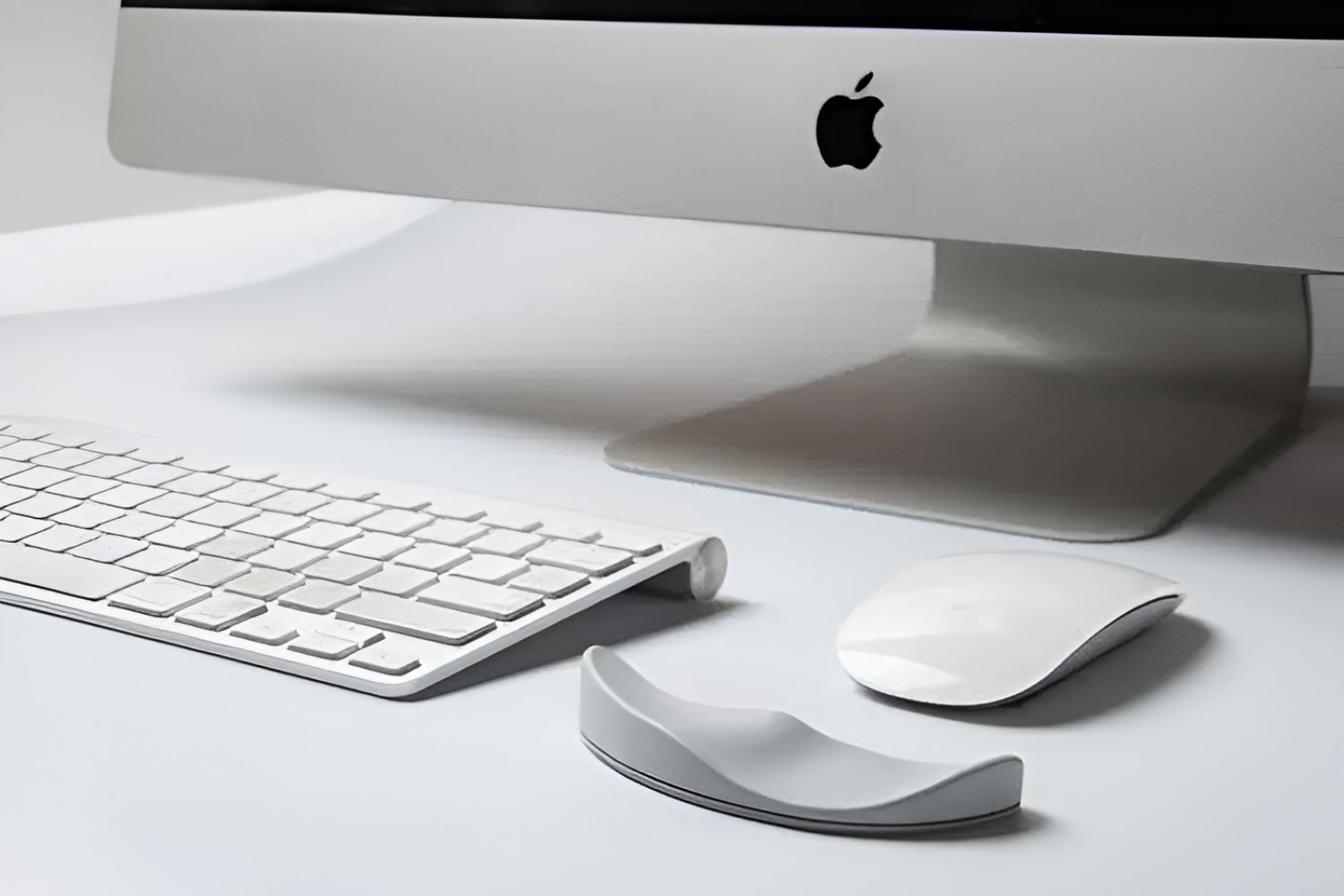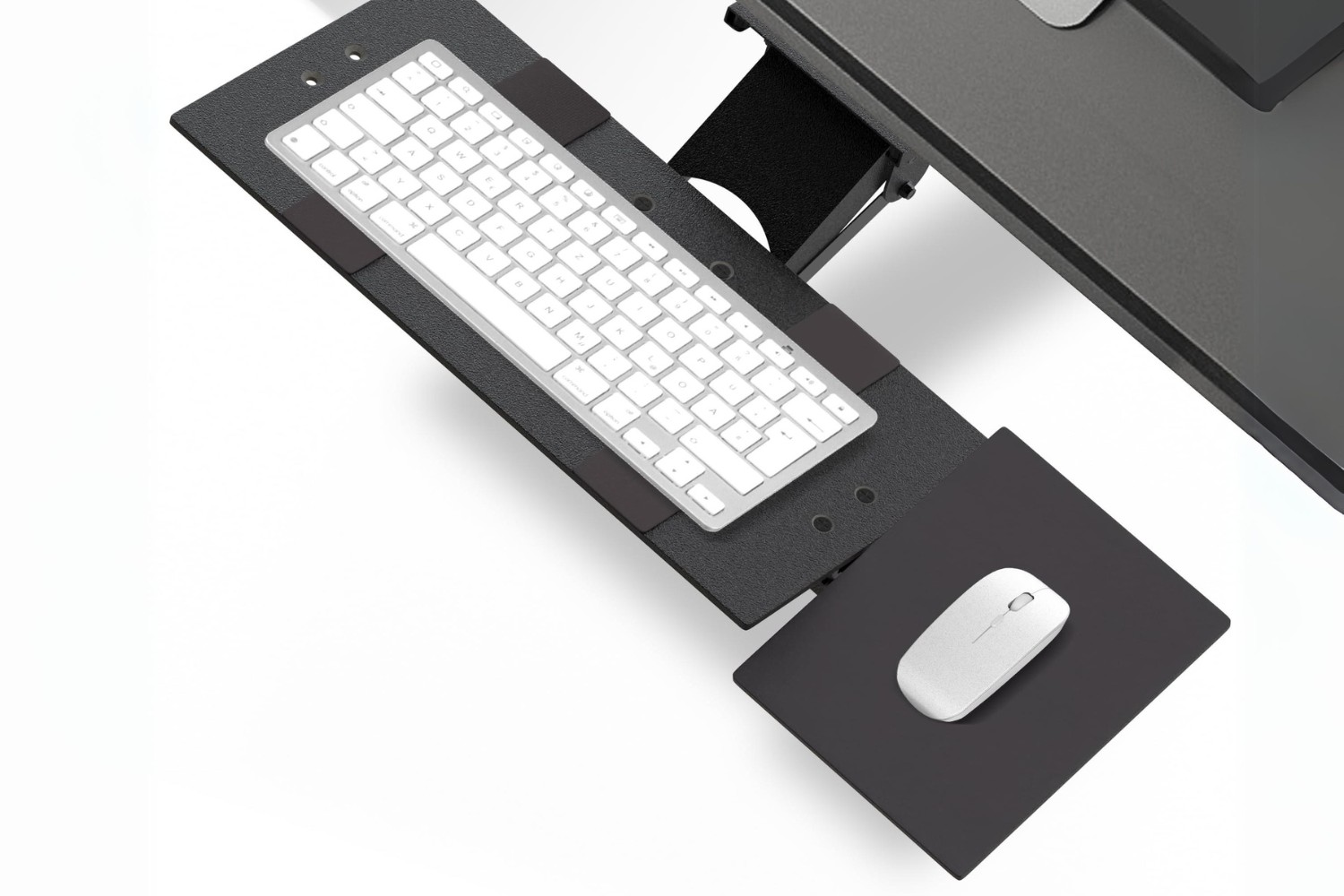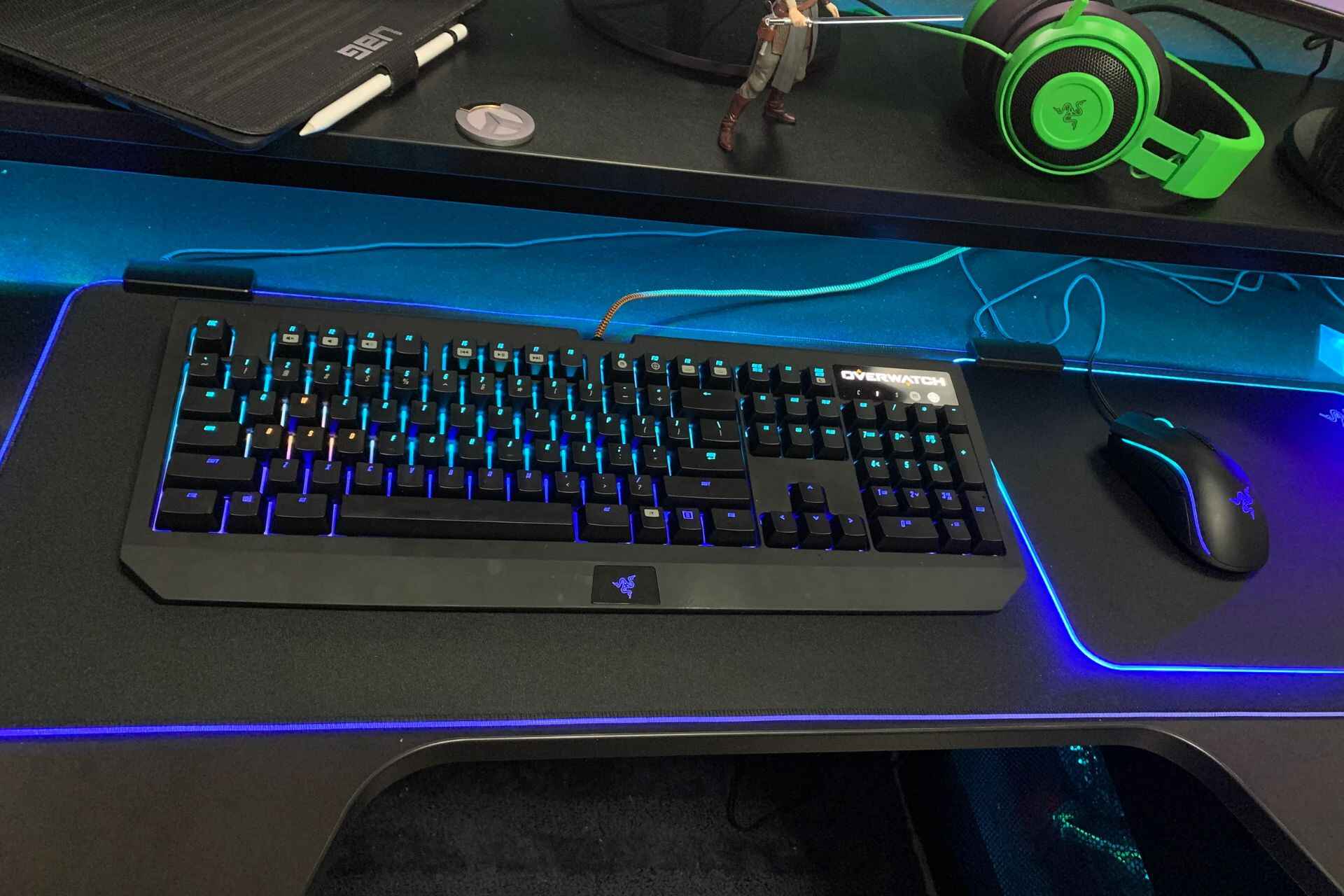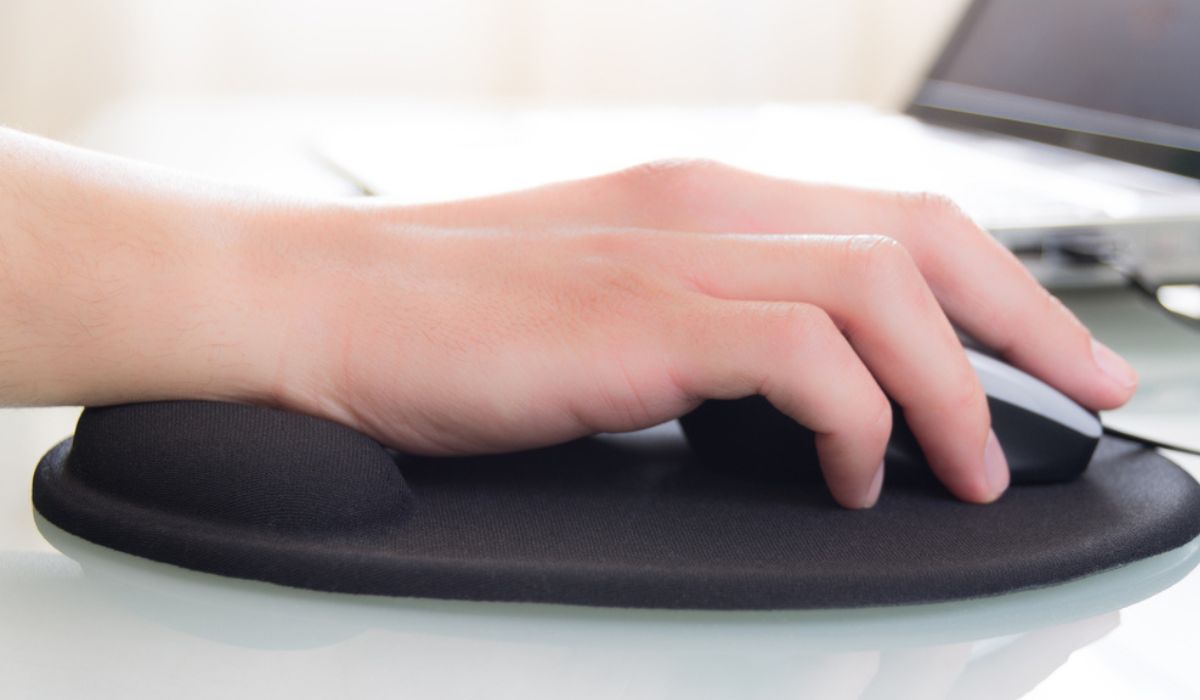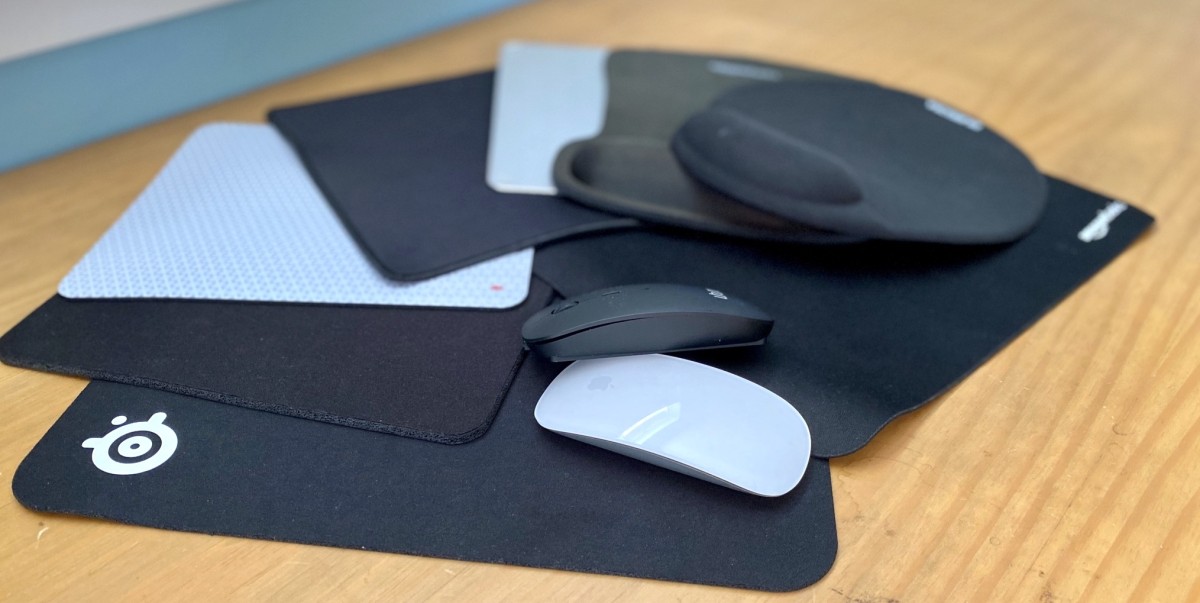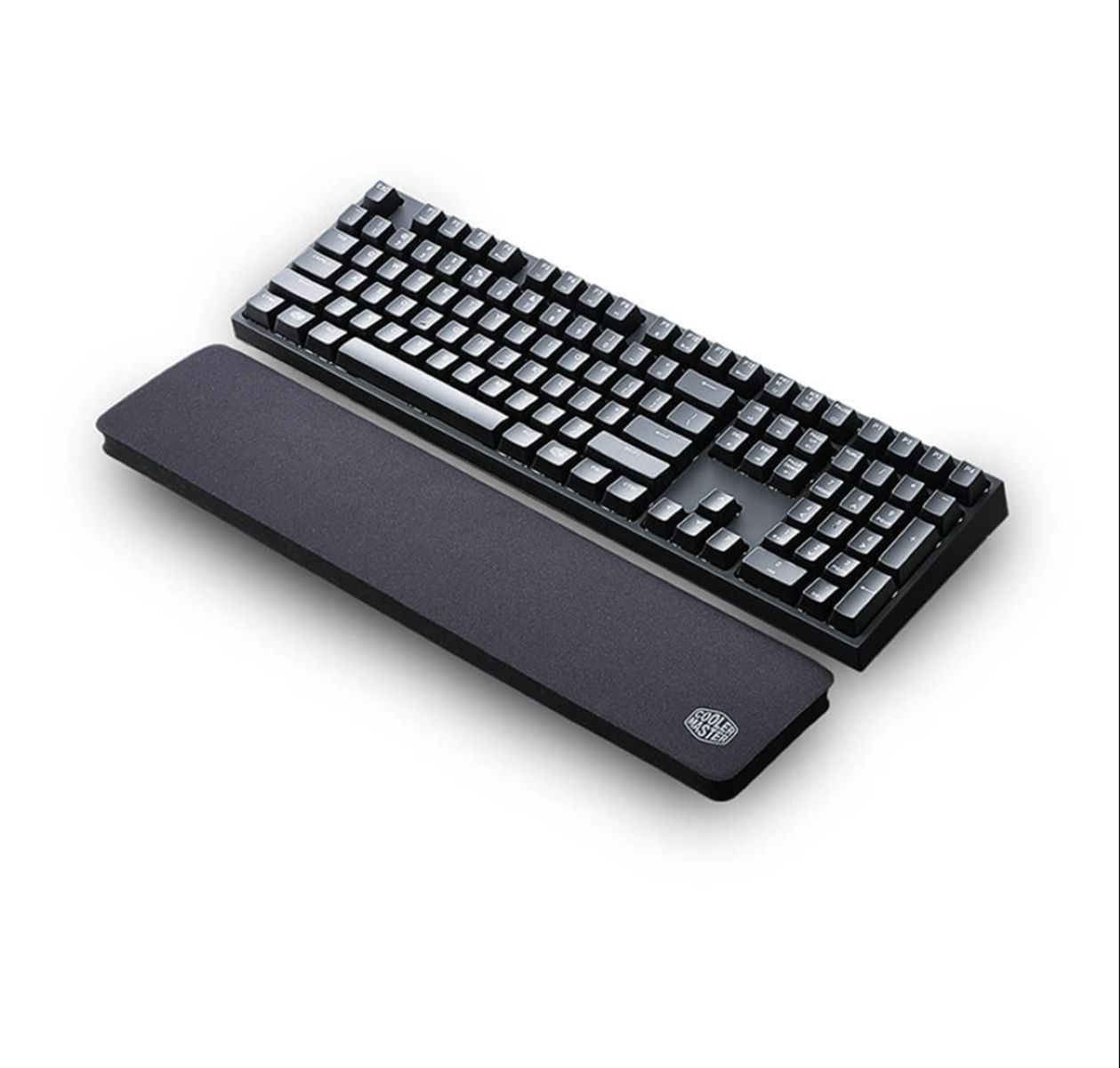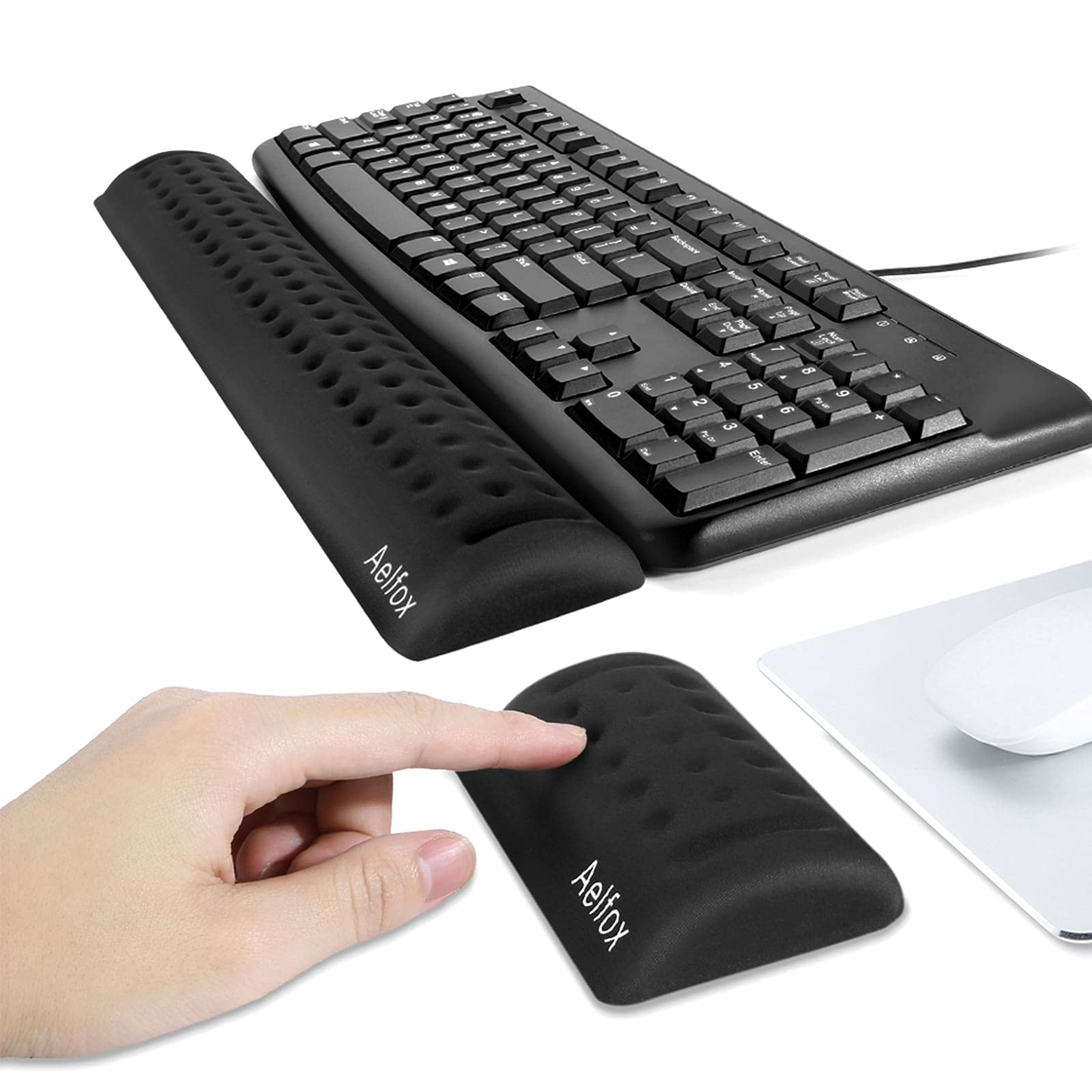Introduction
Welcome to the comprehensive guide on how to use an ergonomic mouse pad. In today's digital age, many of us spend a significant amount of time using computers for work, leisure, or both. This prolonged computer usage can lead to discomfort and strain, particularly in the hands, wrists, and arms. However, with the help of an ergonomic mouse pad, you can minimize the risk of developing these issues and enhance your overall computing experience.
An ergonomic mouse pad is designed to provide optimal support and comfort for your wrist and hand while using a computer mouse. It is specially crafted to promote a more natural and relaxed hand position, reducing the strain caused by repetitive movements. This essential accessory is not only beneficial for avid computer users but also for anyone looking to prevent or alleviate discomfort associated with extended mouse usage.
Throughout this guide, you will discover the numerous benefits of using an ergonomic mouse pad, learn how to choose the right one for your needs, understand the proper setup and usage, and gain valuable tips for maintaining its functionality. By the end of this guide, you will have the knowledge and tools to effectively integrate an ergonomic mouse pad into your computing routine, promoting a healthier and more comfortable experience.
So, whether you are a professional who spends hours at a desk, a student tackling assignments, or an individual who simply enjoys browsing the web, this guide will equip you with the essential information to make the most out of your ergonomic mouse pad. Let's delve into the world of ergonomic accessories and discover how they can enhance your computing lifestyle.
What is an Ergonomic Mouse Pad?
An ergonomic mouse pad, also known as a mouse wrist rest, is a specialized accessory designed to provide support and comfort to the hand and wrist during computer mouse usage. Unlike traditional mouse pads, which primarily serve as a smooth surface for mouse movement, ergonomic mouse pads are equipped with features that promote proper wrist and hand positioning, ultimately reducing the risk of strain and discomfort.
These mouse pads are typically constructed with a cushioned or gel-filled wrist rest that runs along the bottom edge, providing a soft and supportive surface for the wrist to rest on while operating the mouse. The design of the wrist rest encourages a more natural alignment of the hand and wrist, minimizing the strain caused by prolonged mouse usage.
Furthermore, ergonomic mouse pads often feature a textured or smooth surface optimized for precise mouse tracking, ensuring smooth and accurate cursor movement. Some models also incorporate additional features such as built-in wrist support, adjustable angles, and ventilation to enhance comfort and usability.
By utilizing an ergonomic mouse pad, users can experience a more comfortable and ergonomic computing environment, reducing the risk of developing conditions such as carpal tunnel syndrome and repetitive strain injury (RSI). These pads are particularly beneficial for individuals who spend extended periods using a computer mouse, such as office workers, designers, gamers, and students.
Whether you are seeking relief from existing wrist discomfort or aiming to prevent potential strain, an ergonomic mouse pad can significantly improve your overall computing experience. The next section will explore the various benefits of incorporating an ergonomic mouse pad into your workstation, shedding light on the positive impact it can have on your comfort and productivity.
Benefits of Using an Ergonomic Mouse Pad
Integrating an ergonomic mouse pad into your computing setup offers a multitude of benefits that can positively impact your comfort, productivity, and overall well-being. Let’s explore the significant advantages of using this essential accessory:
- Enhanced Wrist Support: An ergonomic mouse pad provides cushioned support for the wrist, promoting a more natural alignment and reducing pressure on the delicate structures of the wrist and hand. This support minimizes the strain caused by extended mouse usage, leading to increased comfort during computing tasks.
- Prevention of Strain and Discomfort: By maintaining proper wrist and hand positioning, ergonomic mouse pads help prevent the development of discomfort and strain associated with prolonged mouse usage. This is particularly beneficial for individuals who spend extended periods working on computers, reducing the risk of conditions such as carpal tunnel syndrome and repetitive strain injury (RSI).
- Improved Ergonomics: The ergonomic design of these mouse pads promotes a more natural and relaxed hand position, aligning the wrist with the forearm to reduce tension and fatigue. This ergonomic enhancement contributes to a more comfortable and sustainable computing experience, especially for those who rely heavily on mouse input.
- Enhanced Precision and Control: Many ergonomic mouse pads feature a specialized surface optimized for precise mouse tracking, ensuring smooth and accurate cursor movement. This enhanced control can benefit users in tasks that require precision, such as graphic design, gaming, and detailed cursor manipulation.
- Comfort During Extended Use: The cushioned wrist rest and ergonomic design of these mouse pads provide sustained comfort during extended computing sessions, allowing users to maintain productivity without experiencing discomfort or fatigue in the wrist and hand area.
- Customized Features: Some ergonomic mouse pads offer additional features such as adjustable angles, built-in wrist support, and ventilation, allowing users to customize their setup for optimal comfort and usability.
By leveraging these benefits, individuals can create a more ergonomic and comfortable computing environment, ultimately improving their overall well-being and productivity. The next section will delve into the essential considerations for choosing the right ergonomic mouse pad, guiding users in selecting the ideal option to suit their specific needs and preferences.
Choosing the Right Ergonomic Mouse Pad
When selecting an ergonomic mouse pad, it’s essential to consider various factors to ensure that the chosen pad aligns with your specific needs and preferences. Here are the key considerations to keep in mind when choosing the right ergonomic mouse pad:
- Wrist Support and Comfort: Look for a mouse pad with ample cushioning and support for the wrist. The wrist rest should be comfortable and provide adequate padding to reduce pressure on the wrist and promote a natural hand position.
- Size and Surface Area: Consider the size of the mouse pad and ensure that it accommodates your preferred range of mouse movement. Additionally, opt for a smooth or textured surface that facilitates precise mouse tracking, depending on your usage preferences.
- Ergonomic Design: Choose a mouse pad with an ergonomic design that promotes proper wrist alignment and minimizes strain. The pad should encourage a relaxed hand position, aligning the wrist with the forearm to reduce tension during use.
- Additional Features: Assess any additional features offered, such as adjustable angles, built-in wrist support, or ventilation. These features can enhance comfort and usability, allowing you to customize the pad to suit your individual requirements.
- Compatibility: Ensure that the mouse pad is compatible with your existing workstation setup and mouse type. Some mouse pads are designed for specific mouse models or are optimized for particular desk surfaces, so compatibility is crucial for seamless integration.
- Quality and Durability: Prioritize mouse pads made from high-quality materials that offer durability and long-term functionality. A durable mouse pad will provide sustained support and comfort, making it a worthwhile investment for your computing setup.
By carefully considering these factors, you can select an ergonomic mouse pad that aligns with your ergonomic needs and preferences, ultimately enhancing your computing experience. Whether you prioritize wrist support, precise mouse tracking, or customizable features, choosing the right mouse pad is essential for creating a comfortable and ergonomic workstation.
The next section will guide you through the proper setup of your chosen ergonomic mouse pad, ensuring that you optimize its functionality and reap the full benefits of its ergonomic design.
Setting Up Your Ergonomic Mouse Pad
Once you have selected the ideal ergonomic mouse pad to suit your needs, it’s important to set it up correctly to maximize its ergonomic benefits. Follow these steps to ensure the proper setup of your ergonomic mouse pad:
- Positioning: Place the ergonomic mouse pad in a central and easily accessible location on your desk. Ensure that it aligns with your natural hand position, allowing for a comfortable reach without straining your arm or wrist.
- Aligning the Wrist Rest: Position the wrist rest of the mouse pad in line with the edge of your desk. This alignment ensures that your wrist remains supported while using the mouse, promoting a natural hand position and reducing strain.
- Mouse Placement: Position your mouse on the smooth or textured surface of the mouse pad, ensuring that it moves freely and accurately. Adjust the placement as needed to accommodate your preferred range of mouse movement and cursor control.
- Testing Comfort: Rest your wrist on the cushioned or gel-filled wrist rest and assess the level of comfort and support. Ensure that the wrist rest aligns with the base of your palm, providing adequate cushioning and promoting a relaxed hand position during mouse operation.
- Customization: If your ergonomic mouse pad features adjustable angles or additional customization options, explore these features to optimize the pad’s setup according to your individual preferences. Experiment with different settings to achieve the most comfortable and ergonomic configuration.
By following these steps, you can effectively set up your ergonomic mouse pad to promote a more natural and comfortable computing experience. The proper positioning and alignment of the mouse pad and wrist rest are crucial for minimizing strain and enhancing comfort during extended computer usage.
With your ergonomic mouse pad correctly set up, you are now ready to leverage its ergonomic benefits and improve your overall computing comfort and productivity. The next section will provide guidance on effectively using your ergonomic mouse pad, ensuring that you maximize its advantages in your daily computing tasks.
Using Your Ergonomic Mouse Pad
Once your ergonomic mouse pad is properly set up, it’s essential to understand how to make the most of its ergonomic benefits during your daily computing activities. Here are some key tips for effectively using your ergonomic mouse pad:
- Maintain Proper Hand Position: When using the mouse, ensure that your hand and wrist maintain a natural and relaxed position on the ergonomic mouse pad. Avoid excessive bending or strain in the wrist, and let the cushioned wrist rest provide support and comfort during mouse operation.
- Regularly Rest Your Wrist: Throughout extended computer usage, remember to periodically rest your wrist on the ergonomic mouse pad’s wrist rest. This practice alleviates strain and promotes circulation, reducing the likelihood of discomfort or fatigue in the wrist and hand area.
- Optimize Mouse Control: Take advantage of the enhanced precision and control offered by your ergonomic mouse pad. The specialized surface of the pad facilitates smooth and accurate mouse tracking, allowing for precise cursor movement and improved control during various computing tasks.
- Utilize Customization Features: If your ergonomic mouse pad includes adjustable angles or other customization options, explore these features to tailor the pad’s setup to your specific preferences. Customizing the pad according to your comfort and ergonomic needs can significantly enhance your overall computing experience.
- Stay Mindful of Wrist Alignment: Be conscious of maintaining proper alignment between your wrist and forearm while using the mouse pad. Avoid awkward wrist angles and strive to keep your wrist in a neutral position, supported by the ergonomic design of the mouse pad’s wrist rest.
By incorporating these tips into your daily computer usage, you can fully leverage the ergonomic advantages of your mouse pad, promoting a more comfortable and sustainable computing experience. Additionally, being mindful of your hand and wrist positioning while using the mouse pad contributes to the prevention of strain and discomfort associated with prolonged mouse usage.
With a clear understanding of how to effectively use your ergonomic mouse pad, you are well-equipped to integrate its ergonomic benefits into your computing routine. The following section will provide valuable tips for maintaining the functionality and condition of your ergonomic mouse pad, ensuring its long-term effectiveness and comfort.
Tips for Maintaining Your Ergonomic Mouse Pad
Proper maintenance of your ergonomic mouse pad is crucial for preserving its functionality and ensuring long-term comfort and support. Here are essential tips for maintaining your ergonomic mouse pad:
- Regular Cleaning: Keep your ergonomic mouse pad clean by regularly wiping its surface with a soft, damp cloth to remove dust, dirt, and debris. For deeper cleaning, consider using a mild cleaning solution and gently wiping the surface before allowing it to air dry thoroughly.
- Protect from Spills: To prevent damage, avoid exposing your mouse pad to liquid spills or moisture. Consider using a protective cover or placing it in a spill-resistant area of your desk to safeguard it from accidental spills or moisture exposure.
- Rotate and Adjust Placement: Periodically rotate and adjust the placement of your mouse pad to distribute wear evenly across its surface. This practice prevents excessive wear in specific areas and extends the overall lifespan of the pad.
- Inspect for Wear: Regularly inspect your mouse pad for signs of wear, such as fraying edges or diminished cushioning. If you notice any wear and tear, consider replacing the pad to maintain optimal support and comfort for your wrist and hand.
- Store Properly: When not in use, store your ergonomic mouse pad in a clean and dry area to prevent dust accumulation and protect it from potential damage. Proper storage helps maintain the pad’s condition and extends its longevity.
- Follow Manufacturer’s Guidelines: Adhere to any specific care and maintenance instructions provided by the manufacturer of your ergonomic mouse pad. Following these guidelines ensures that you maintain the pad’s functionality and comfort as intended by the manufacturer.
By implementing these maintenance tips, you can preserve the functionality and comfort of your ergonomic mouse pad, ensuring that it continues to provide optimal support and ergonomic benefits throughout its lifespan.
With a well-maintained ergonomic mouse pad, you can consistently enjoy the comfort and support it offers, promoting a healthier and more ergonomic computing experience. The next section will summarize the key insights and recommendations covered in this guide, providing a comprehensive overview of the benefits and proper usage of ergonomic mouse pads.
Conclusion
Congratulations on completing this comprehensive guide on how to use an ergonomic mouse pad to enhance your computing experience. Throughout this guide, we explored the essential aspects of ergonomic mouse pads, including their benefits, selection criteria, setup, usage, and maintenance. By incorporating an ergonomic mouse pad into your workstation, you have taken a proactive step towards promoting comfort, support, and overall well-being during prolonged computer usage.
We began by understanding the significance of ergonomic mouse pads, which are designed to provide optimal support and comfort for the hand and wrist while using a computer mouse. These specialized accessories offer numerous benefits, including enhanced wrist support, prevention of strain and discomfort, improved ergonomics, enhanced precision and control, sustained comfort during extended use, and customizable features to cater to individual needs.
When choosing the right ergonomic mouse pad, considerations such as wrist support, size, ergonomic design, additional features, compatibility, and quality were highlighted to guide you in selecting a pad that aligns with your specific ergonomic needs and preferences.
Properly setting up and using your ergonomic mouse pad involves positioning it correctly, aligning the wrist rest, optimizing mouse control, utilizing customization features, and maintaining mindful wrist alignment during use. By following these guidelines, you can maximize the ergonomic benefits of your mouse pad and promote a more comfortable and sustainable computing experience.
Furthermore, maintaining the functionality and condition of your ergonomic mouse pad through regular cleaning, protection from spills, rotation and adjustment, wear inspection, proper storage, and adherence to manufacturer’s guidelines ensures that the pad continues to provide optimal support and comfort over time.
By integrating these insights and recommendations, you are well-prepared to leverage the ergonomic advantages of your mouse pad and create a more ergonomic, comfortable, and productive computing environment. Whether you are a professional, student, designer, or avid computer user, the benefits of an ergonomic mouse pad can significantly enhance your overall computing experience.
Remember, prioritizing your comfort and well-being during computer usage is essential, and the utilization of ergonomic accessories such as mouse pads plays a pivotal role in achieving this goal. We hope this guide has equipped you with the knowledge and tools to make the most out of your ergonomic mouse pad, ultimately enhancing your computing lifestyle for the better.
Embrace the ergonomic benefits, and may your computing endeavors be characterized by comfort, support, and productivity. Here’s to a more ergonomic and enjoyable computing experience!







